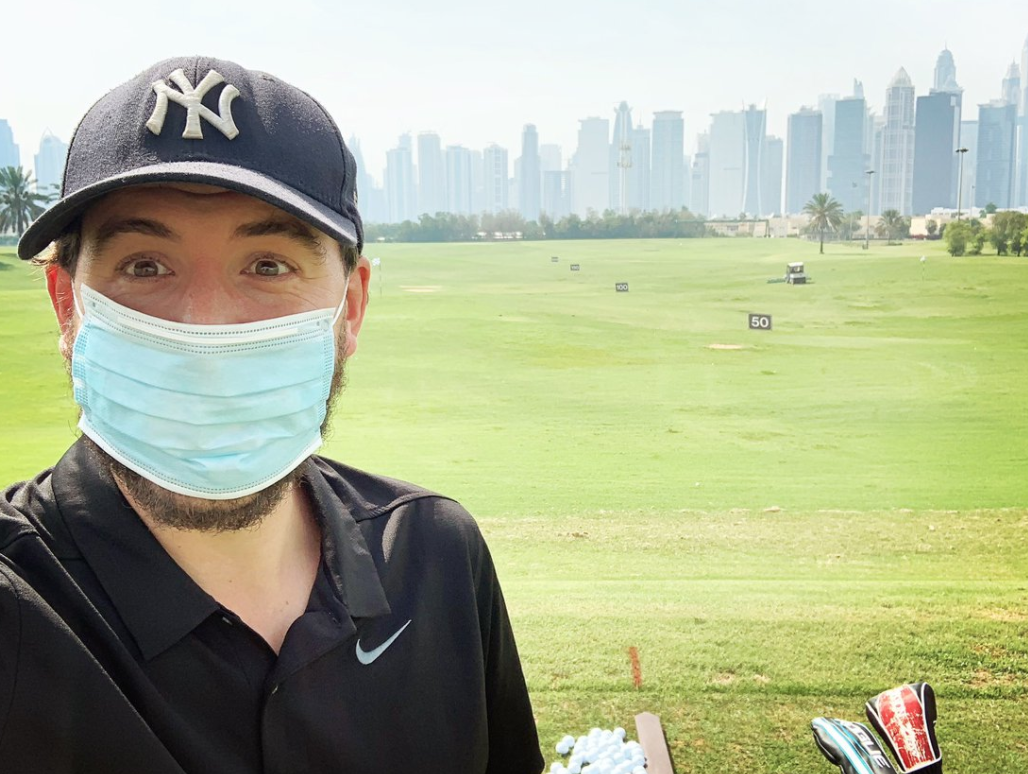After months in isolation and mentally plotting my next trip around the golf course, Dubai-based ALISTAIR HOGG finally had the opportunity to get back out there.
In our new socially distant world, there were some differences that will forever change the face of the social game … but if you ask me most of them will be for the better.
Results may vary depending where you are in the world, but here are five key changes you might notice next time you play:
- Groups limited to three, rather than four players (all masked)
- When using carts, only solo riding allowed
- Immovable pin flags and shallow holes with foam inserts
- No rakes for bunkers
- Certain facilities and club amenities closed for the foreseeable future
A few snaps from around the course today.
Can’t tell you how much I enjoyed getting back out there! Perfect timing for restrictions to ease with Dubai summer memberships kicking in next month ? pic.twitter.com/oNvYivPjvH
— Alistair Hogg (@alistairjhogg) May 7, 2020
While social distancing is at the heart of these changes, the wonderful by-product of the changes is that the pace of play should improve significantly.
For starters, you have 25 per cent fewer players on course. While this might have some unfortunate financial side effects on green fees at busier establishment as clubs seek to recoup weeks/months of lost income, it certainly decongests the course.
Similarly, riding solo in carts saves zig-zagging across the fairway from one ball to the other (and let’s be honest … how many of us actually play sociable golf with our cart partner?). Now it’s a case of hitting your ball and making a beeline towards it giving rise to a more time economical version of the game. Point to point golf is here.
A recent practice led by Bryson DeChambeau has seen more players opting to putt with the pin in. It’s a trend that has been picked up by many at social levels. The American cops his fair share of flack for his deeply analytic approach to the game and his reasons for ‘pin in’ putting are scientific rather than an aid to promote a better pace of play, but anything that encourages weekend hackers to speed up should be applauded and immovable pins certainly takes the option out of our hands.
With your putt now rolling smoothly toward the fixed pin, you will notice that the holes are shallower and contain small foam inserts, preventing the ball from falling down where you would need to retrieve it from where dozens have placed their hand before you.
There is little discernible difference to pre-pandemic putting and I’m yet to see a ball pop out, or fail to drop that otherwise would have with the pin out or the hole cut deeper and if it does, won’t we all just use reasonable common sense discretion?
Much like you no longer need to handle pin flags, there is now also no option to rake bunkers after splashing out of the sand. Simply do your best to repair the trap using your shoe or club and if you find your ball in a spoiled lie, simply move it an inch – this is not the PGA Tour and you aren’t in contention for the FedExCup prize money You’ll find many clubs have implemented local rules catering for this).
The result of all of this is a vastly quicker game! In several post-lockdown rounds, our groups have been around in 2.5-3 hours when usual pace of play is a tick over four hours, occasionally even playing a second ball on certain holes.
Will clubs tinker with their rates to compensate for fewer players? Probably.
If that’s what it takes to play this track all summer… pic.twitter.com/EpsWGjWc6s
— Alistair Hogg (@alistairjhogg) May 15, 2020
Is wearing a mask uncomfortable and frustrating? Absolutely.
Is it a pain to not be able to shower or use locker room facilities and drive home a sweaty mess? Yes it is!
But it’s a small price to pay for a radical overhaul to a sport that is constantly plagued by slow play, from the upper echelons of the game where they’re putting for millions right down to weekend warriors who have precious little time to play golf, let alone stagger through five-hour rounds with so many other priorities in life.
The jury is out, but early signs suggest these changes will be for the best as far as the recreational game is concerned.







